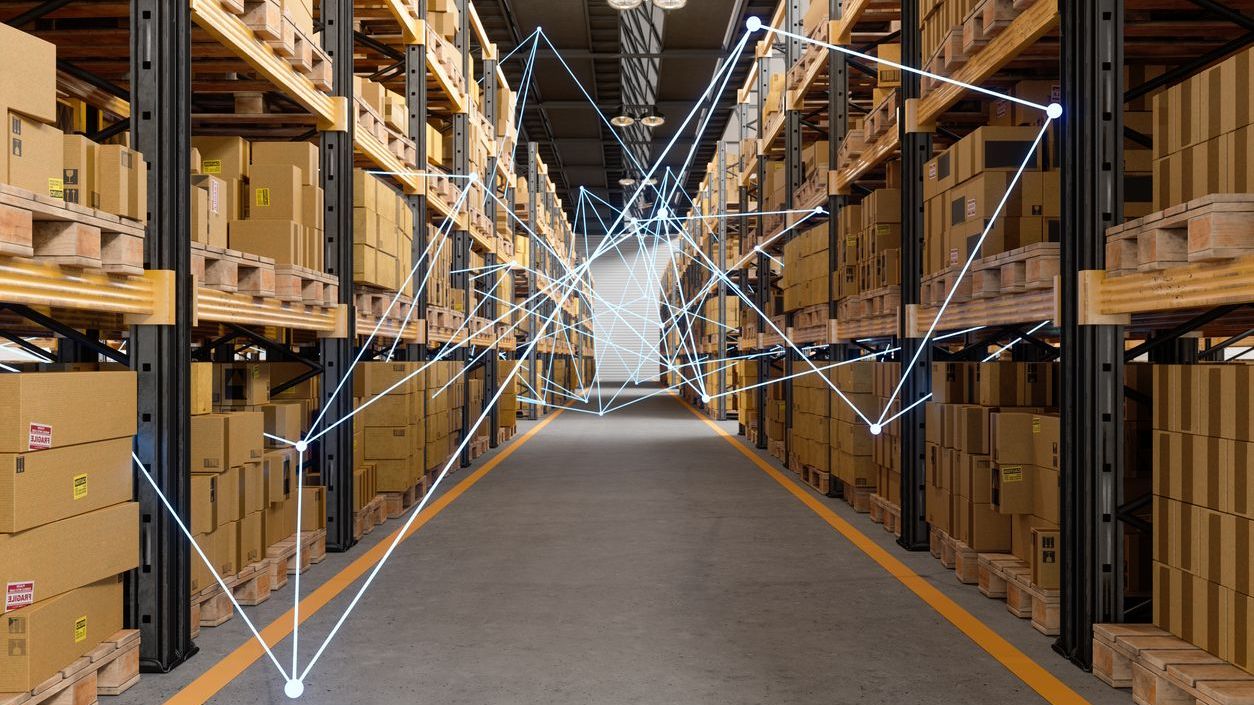The world of employee scheduling is undergoing a revolutionary transformation with the integration of augmented reality (AR) technologies. AR scheduling tools are changing how businesses visualize, plan, and execute workforce management by overlaying digital schedule information onto the physical world. This convergence of digital and physical realms creates immersive experiences that make complex scheduling more intuitive, accessible, and effective for both managers and employees.
In today’s competitive business landscape, organizations are constantly seeking innovative ways to optimize their operations, and AR scheduling represents one of the most promising technological advances in workforce management. By bringing schedules to life through interactive, three-dimensional visualizations, AR is addressing traditional pain points in employee coordination while opening new possibilities for how teams interact with scheduling information.
Understanding AR Scheduling Technology
Augmented reality scheduling combines cutting-edge AR technology with workforce management systems to create a more intuitive scheduling experience. Unlike traditional scheduling methods that rely on two-dimensional displays or paper schedules, AR scheduling creates an interactive, spatially-aware environment where schedule information is contextualized within the workplace itself.
- Spatial Computing Integration: AR scheduling systems use spatial computing to map digital schedule information onto physical spaces, allowing managers to visualize staffing needs in context.
- Real-Time Data Visualization: Advanced AR tools incorporate real-time data processing to display up-to-the-minute schedule changes and staffing levels.
- Gesture-Based Interactions: Many AR scheduling platforms allow users to manipulate schedules using natural hand gestures, reducing the learning curve for new users.
- Device Compatibility: AR scheduling solutions can operate on smartphones, tablets, AR glasses, or headsets, offering flexibility in implementation.
- Spatial Anchoring: Schedule information can be “anchored” to specific locations within a workplace, allowing employees to access relevant scheduling information where it’s most needed.
The technical foundation of these systems is sophisticated, combining elements of cloud computing, computer vision, and advanced scheduling algorithms to create seamless experiences that enhance rather than complicate the scheduling process.
Benefits of AR for Workforce Management
AR scheduling tools deliver significant benefits for workforce management that extend beyond mere visual appeal. The immersive nature of augmented reality creates tangible improvements in scheduling efficiency, accuracy, and employee engagement. Organizations implementing AR scheduling solutions are discovering numerous operational advantages.
- Enhanced Spatial Understanding: Managers can visualize staffing distributions across physical spaces, making it easier to identify coverage gaps or overstaffing situations.
- Reduced Cognitive Load: Complex scheduling information becomes more digestible when presented visually in three dimensions, reducing the mental effort required to process scheduling data.
- Improved Collaboration: AR enables collaborative scheduling where multiple stakeholders can interact with the same schedule visualization simultaneously.
- Contextual Awareness: Schedule information can be presented in the context of specific workstations or departments, improving relevance and usability.
- Error Reduction: Visual confirmation of schedule assignments helps reduce scheduling errors and misunderstandings.
These benefits translate into measurable business outcomes, including decreased scheduling conflicts, improved employee satisfaction, and more efficient use of human resources. For organizations committed to optimizing their employee scheduling processes, AR represents a significant competitive advantage.
AR Calendar Integration and Visualization
One of the most powerful applications of AR in scheduling is the transformation of traditional calendars into interactive, spatially-aware visualizations. AR calendar integration creates intuitive schedule displays that help both managers and employees better understand temporal relationships and scheduling patterns.
- Timeline Visualization: AR can transform linear calendars into three-dimensional timelines that can be navigated spatially, providing better understanding of schedule progression.
- Schedule Layering: Different schedule views (by department, role, or shift type) can be layered in AR space, allowing for comparison and pattern recognition.
- Personal Calendar Integration: Employee personal calendars can be integrated with work schedules in AR, helping identify potential conflicts with work-life balance.
- Color-Coded Visualization: AR scheduling uses color-coding and visual indicators to quickly communicate schedule status, coverage levels, and potential problems.
- Interactive Manipulation: Schedules in AR can be manipulated directly with gestures, allowing for intuitive schedule adjustments and experimentation.
This integration of scheduling data with spatial computing creates powerful new ways to understand temporal information. By transforming abstract schedule data into intuitive visual experiences, AR calendar integration makes schedule templates more accessible and actionable for all stakeholders.
AR Task Visualization for Managers and Employees
Beyond simply showing when employees are scheduled to work, AR scheduling excels at visualizing the specific tasks and responsibilities associated with each shift. This task visualization creates clarity around expectations and helps both managers and employees understand how work is distributed throughout the organization.
- Task Assignment Visualization: AR can show which employees are assigned to specific tasks, creating clear accountability and preventing duplication of effort.
- Workload Distribution: Managers can visualize how tasks are distributed across teams to ensure balanced workloads and appropriate resource allocation.
- Task Dependencies: AR visualization can illustrate dependencies between tasks, helping teams understand sequencing requirements and critical paths.
- Progress Tracking: Real-time updates can show task completion status, helping managers identify bottlenecks or areas requiring additional support.
- Skill Matching: AR scheduling can highlight the match between employee skills and task requirements, facilitating optimal skill-based scheduling.
This detailed visualization of tasks within the scheduling context helps create more effective workforce utilization while reducing confusion about responsibilities. Employees benefit from clearer expectations, while managers gain insights into operational efficiency that would be difficult to achieve with traditional scheduling approaches.
Implementation Challenges and Solutions
While the benefits of AR scheduling are substantial, organizations must navigate several implementation challenges to successfully integrate this technology into their workforce management processes. Understanding these challenges and their solutions is crucial for successful adoption.
- Technology Investment: AR hardware can represent a significant investment. Organizations can begin with smartphone/tablet AR before moving to dedicated headsets, or implement a phased implementation approach.
- Integration Complexity: Connecting AR systems with existing scheduling software requires careful planning. Seek solutions with robust integration technologies and APIs.
- Learning Curve: Employees and managers need time to adjust to AR interfaces. Comprehensive training programs and phased rollouts can smooth adoption.
- Data Security: AR systems process sensitive personnel data. Implement strong data privacy practices and security protocols.
- User Resistance: Some employees may resist new technology. Focus on demonstrating tangible benefits and gathering user feedback during implementation.
Organizations that successfully navigate these challenges often implement AR scheduling in phases, starting with specific departments or use cases before expanding. This approach allows for learning and adaptation before full-scale deployment, increasing the likelihood of successful adoption and positive ROI.
AR Scheduling Applications Across Industries
The versatility of AR scheduling technologies makes them applicable across numerous industries, with each sector finding unique applications that address their specific scheduling challenges. While the fundamental benefits remain consistent, implementation details and use cases vary significantly by industry.
- Retail: AR scheduling in retail environments can visualize customer traffic patterns alongside staffing levels, helping managers position employees where they’re most needed throughout store layouts.
- Healthcare: Healthcare facilities use AR scheduling to visualize complex shift patterns for medical staff, ensuring appropriate coverage across different departments and specialties while maintaining compliance with work-hour regulations.
- Manufacturing: Production facilities implement AR scheduling to visualize worker positions along assembly lines, helping optimize staffing for maximum productivity while maintaining safety standards.
- Hospitality: Hotels and restaurants use AR to visualize staffing levels throughout their facilities, ensuring appropriate coverage during peak times while maintaining efficient operations during slower periods.
- Logistics: Supply chain operations benefit from AR scheduling that visualizes the movement of personnel alongside goods, optimizing workforce deployment throughout warehouses and distribution centers.
Each industry adaptation demonstrates how AR scheduling can be customized to address specific operational challenges while delivering universal benefits in visualization, coordination, and engagement. The flexibility of AR technologies allows organizations to tailor implementations to their unique workforce management needs.
Future Trends in Augmented Reality Shift Planning
The field of AR scheduling is rapidly evolving, with several emerging trends poised to further transform how organizations approach workforce management. Understanding these trends helps businesses prepare for the next generation of scheduling technologies while positioning themselves to capitalize on future innovations.
- AI-Enhanced Scheduling: The combination of artificial intelligence with AR scheduling will enable predictive staffing recommendations based on historical patterns and real-time conditions.
- Wearable Integration: As wearable technology becomes more prevalent, AR scheduling will shift from handheld devices to wearable displays, creating more seamless scheduling experiences.
- Biometric Integration: Biometric systems will be incorporated into AR scheduling, allowing for authentication and automatic clock-ins through facial recognition or other biometric indicators.
- Digital Twin Integration: AR scheduling will incorporate digital twins of physical workspaces, allowing for simulation and testing of different scheduling scenarios before implementation.
- Voice Command Scheduling: Natural language processing will enable voice-controlled AR scheduling, making schedule adjustments and queries even more intuitive.
These advancements represent the convergence of multiple technologies with AR scheduling, creating increasingly powerful tools for workforce optimization. Organizations that stay abreast of these trends will be well-positioned to maintain competitive advantage in workforce management capabilities.
Best Practices for AR Employee Coordination
Successfully implementing and maintaining AR scheduling requires adherence to best practices that maximize the technology’s benefits while minimizing potential pitfalls. Organizations that follow these guidelines typically experience more successful deployments and higher adoption rates among employees.
- Start With Clear Objectives: Define specific goals for AR scheduling implementation, such as reducing scheduling conflicts or improving visibility of staffing patterns.
- Ensure Hardware Compatibility: Verify that existing devices can support AR applications or budget for appropriate hardware upgrades.
- Prioritize User Experience: Focus on creating intuitive interfaces that require minimal training, making adoption easier for all users.
- Implement Robust Security: Establish strong data protection protocols to safeguard sensitive employee information visualized through AR systems.
- Gather and Incorporate Feedback: Create mechanisms for continuous feedback collection from users to refine and improve the AR scheduling experience.
Organizations can further enhance their AR scheduling implementation by leveraging team communication tools to supplement visual scheduling information with contextual discussions. This multi-channel approach creates a comprehensive coordination system that addresses both the visual and communication aspects of effective workforce management.
Enhancing Employee Experience with AR Scheduling
Beyond operational benefits, AR scheduling significantly enhances the employee experience, creating more engaging, transparent, and empowering interactions with work schedules. This improved experience translates into measurable benefits for employee satisfaction, retention, and productivity.
- Schedule Transparency: AR visualization creates greater transparency in scheduling, helping employees understand not just their own schedules but how they fit into the broader team context.
- Simplified Schedule Changes: AR interfaces can make requesting time off or shift swaps more intuitive, reducing friction in schedule management.
- Contextual Information: AR can provide employees with contextual information about their shifts, such as expected customer volume, special events, or specific responsibilities.
- Reduced Scheduling Anxiety: Clearer visualization of schedules can reduce anxiety about shift assignments and changes, particularly for employees with variable schedules.
- Self-Service Empowerment: AR interfaces can make self-service scheduling more accessible, giving employees greater control over their work lives.
This enhanced employee experience contributes to a more positive workplace culture where scheduling is viewed as a collaborative process rather than an imposed constraint. When employees feel more engaged with and in control of their schedules, organizations typically see improvements in attendance, punctuality, and overall job satisfaction.
Measuring ROI of AR Scheduling Implementation
Investing in AR scheduling technology represents a significant commitment, making it essential to measure the return on investment accurately. Organizations can assess the value of their AR scheduling implementation through multiple metrics that capture both direct and indirect benefits.
- Reduction in Scheduling Conflicts: Measure the decrease in double-bookings, understaffing incidents, and last-minute schedule changes after implementing AR scheduling.
- Time Savings: Calculate the reduction in time spent creating and adjusting schedules compared to pre-AR processes.
- Staffing Optimization: Assess improvements in matching staffing levels to demand, potentially reducing overtime costs or overstaffing.
- Employee Satisfaction: Use surveys to measure changes in employee satisfaction with scheduling processes before and after AR implementation.
- Turnover Reduction: Track changes in employee turnover rates, particularly scheduling-related departures, following AR scheduling adoption.
By establishing clear metrics before implementation and consistently tracking them afterward, organizations can demonstrate the tangible value of their AR scheduling investment. This data-driven approach to evaluation helps justify the investment while identifying areas for continued improvement and optimization of the AR scheduling system.
Conclusion
Augmented reality scheduling represents a transformative approach to workforce management, bringing schedules to life through immersive visualization and intuitive interaction. By overlaying digital scheduling information onto the physical workplace, AR creates a more accessible, understandable, and engaging scheduling experience for both managers and employees.
Organizations across industries stand to benefit from improved scheduling accuracy, enhanced spatial awareness of staffing needs, reduced scheduling conflicts, and a more engaged workforce. While implementation challenges exist, careful planning and adherence to best practices can lead to successful adoption and significant returns on investment. As AR technology continues to evolve alongside AI, wearables, and other complementary technologies, the potential for further innovation in scheduling remains substantial. Forward-thinking organizations that embrace AR scheduling now will position themselves at the forefront of workforce management innovation, gaining competitive advantages while creating more positive experiences for their employees. Tools like Shyft are at the forefront of bringing technology innovations to workforce scheduling, helping businesses transform their approach to employee coordination.
FAQ
1. What are AR scheduling tools?
AR scheduling tools are applications that use augmented reality technology to visualize employee schedules and staffing information by overlaying digital content onto the physical workplace. These tools transform traditional two-dimensional schedules into interactive, spatial visualizations that provide greater context and understanding of staffing patterns, task assignments, and scheduling relationships. They typically operate on smartphones, tablets, or dedicated AR headsets, allowing users to interact with scheduling information in a more intuitive and spatially-aware manner.
2. How does augmented reality improve employee scheduling?
Augmented reality improves employee scheduling by enhancing visualization, creating better spatial understanding of staffing needs, reducing cognitive load when processing complex schedules, enabling more intuitive interactions with scheduling systems, and providing contextual information that helps both managers and employees make better decisions. AR makes abstract scheduling concepts more concrete by placing them in physical context, helping users identify patterns, gaps, and opportunities that might be missed in traditional scheduling formats.
3. What industries benefit most from AR scheduling?
While AR scheduling can benefit any industry with complex workforce management needs, certain sectors see particularly strong advantages. Retail benefits from visualizing staff distribution throughout store layouts alongside customer traffic patterns. Healthcare uses AR to manage complex shift rotations while ensuring appropriate coverage across specialties. Manufacturing leverages AR to optimize staffing along production lines. Hospitality uses AR to coordinate staff across multiple areas of service. Logistics and supply chain operations benefit from visualizing staff movement and position throughout warehouses and distribution centers.
4. What hardware is needed for AR scheduling implementation?
AR scheduling can be implemented using various hardware options, ranging from existing devices to specialized equipment. At the basic level, modern smartphones and tablets with AR capabilities can run many AR scheduling applications, providing a low-barrier entry point. For more immersive experiences, AR glasses or headsets offer hands-free operation and greater visual field integration. Some organizations start with mobile devices before transitioning to dedicated AR hardware as the technology proves its value. The specific hardware requirements depend on the complexity of the AR application and the desired level of immersion.
5. How does AR scheduling improve employee engagement?
AR scheduling improves employee engagement by creating more transparent, interactive, and accessible scheduling experiences. The visual nature of AR makes schedules more intuitive to understand, reducing frustration and confusion. AR interfaces can make schedule requests and changes more straightforward, giving employees greater agency in managing their work lives. The contextual information provided through AR helps employees better understand their role within the broader team, creating stronger connections to the workplace. Additionally, the innovative nature of AR technology itself can generate enthusiasm and interest, particularly among tech-savvy employees who appreciate forward-thinking workplace tools.












